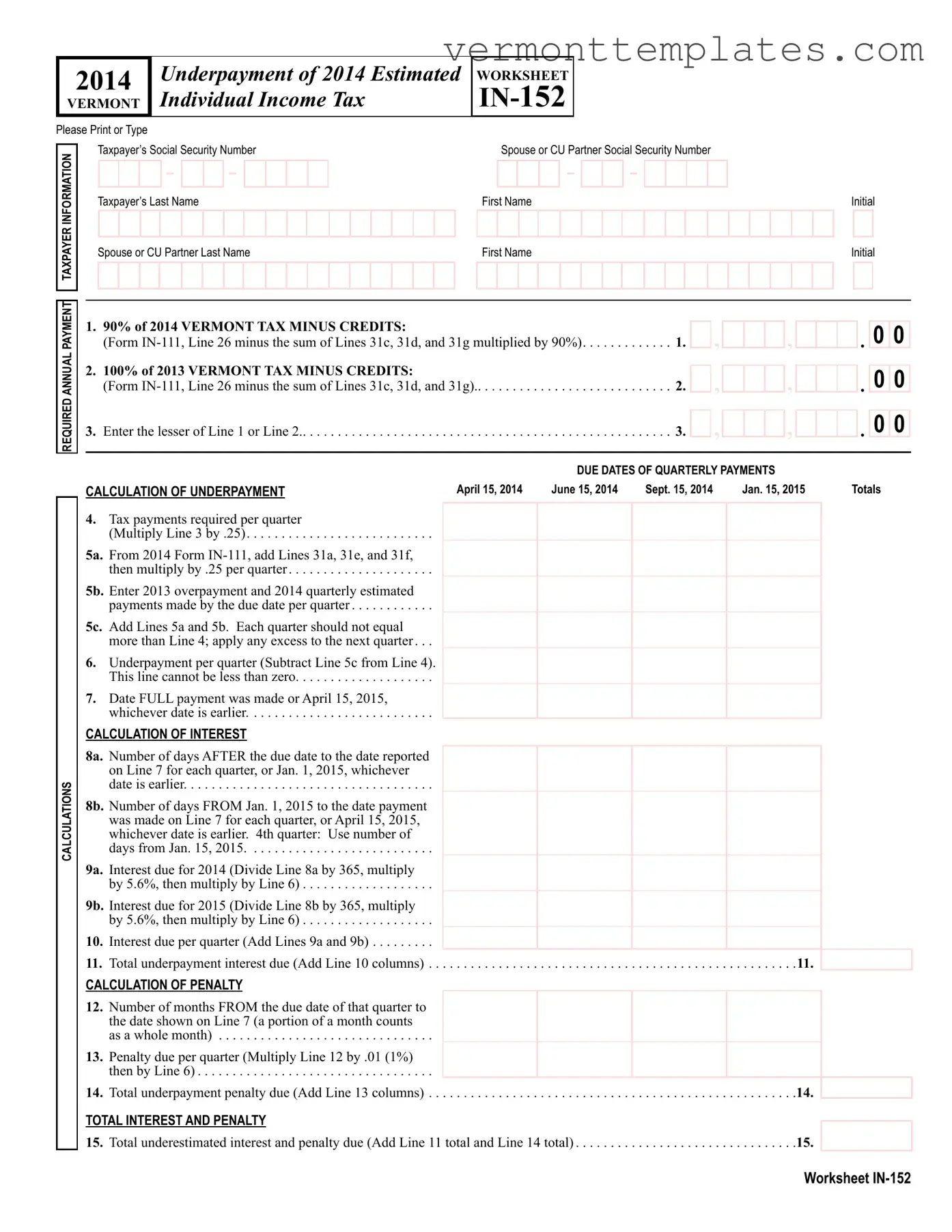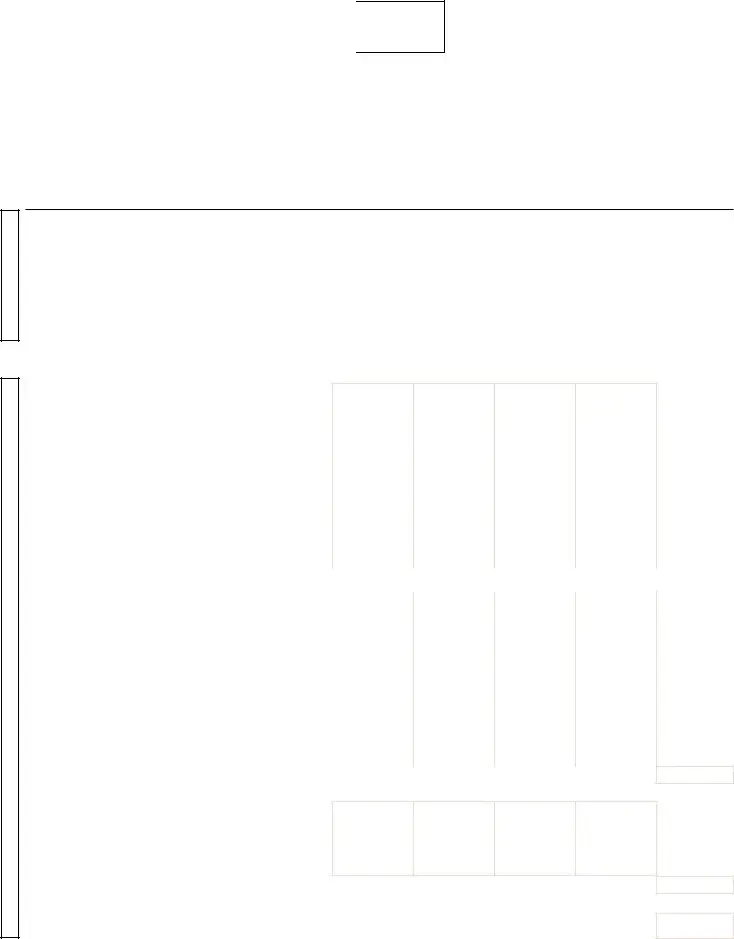The Vermont IN-152 form is similar to the IRS Form 1040-ES, which is used for estimating and paying individual income tax. Both forms require taxpayers to calculate their estimated tax liability based on the previous year's income and apply credits and deductions accordingly. The key similarity lies in the quarterly payment structure, where taxpayers must estimate their tax obligations for the year and make payments in four installments. Both forms also emphasize the importance of meeting payment deadlines to avoid penalties and interest on underpayments.
Another document comparable to the Vermont IN-152 is the California Form 540-ES. This form serves a similar purpose for California residents, allowing them to report and pay estimated state income tax. Like the Vermont form, it involves calculating estimated tax based on the prior year’s tax liability and requires quarterly payments. Both forms aim to ensure taxpayers stay compliant with state tax laws and avoid underpayment penalties, reinforcing the necessity of timely submissions.
When handling the sale of an all-terrain vehicle in California, it's crucial to have the proper documentation to ensure a smooth transaction. The California ATV Bill of Sale form serves as an official record of this sale, detailing the necessary terms and conditions agreed upon by both parties. This form not only facilitates the transfer of ownership but also aligns with other state forms, as seen in All California Forms, which provide guidance on various legal documents needed for transactions within the state.
The New York State IT-2105 is also akin to the Vermont IN-152. This form is designed for New York taxpayers to estimate their income tax liability and make quarterly payments. Both forms require taxpayers to determine their estimated tax based on previous income and apply any credits. The structure of calculating underpayments and potential penalties is consistent across both forms, highlighting the shared goal of maintaining compliance with tax obligations.
Similarly, the Massachusetts Form 1-ES serves a parallel function. It allows Massachusetts residents to estimate and pay their state income tax in installments. Both the Massachusetts and Vermont forms require taxpayers to assess their previous year’s tax situation to project current liabilities. They also share common deadlines for quarterly payments, which helps taxpayers manage their cash flow throughout the year.
The Florida Estimated Tax Payment Form is another related document. Although Florida does not impose a state income tax, the form is used for estimating and paying taxes for certain entities and individuals who may have tax obligations. The similarities with the Vermont IN-152 lie in the quarterly payment structure and the need for accurate calculations to avoid penalties. Both forms underscore the importance of estimating tax liabilities correctly to ensure compliance.
The Texas Franchise Tax Report is comparable in that it requires businesses to estimate their tax obligations. While it is specific to franchise tax rather than individual income tax, the underlying principle of estimating and making timely payments resonates with the Vermont IN-152. Both documents aim to facilitate compliance and minimize penalties through accurate estimations and timely submissions.
The Pennsylvania Form REV-419 is another document that shares similarities with the Vermont IN-152. This form is used for estimating personal income tax payments in Pennsylvania. Taxpayers must calculate their estimated tax based on prior income and make quarterly payments, mirroring the approach taken in Vermont. Both forms highlight the necessity of adhering to deadlines to avoid additional costs associated with underpayment.
The Illinois Form IL-1040-ES also bears resemblance to the Vermont IN-152. It is utilized by Illinois residents to estimate their state income tax and make quarterly payments. The format and purpose align closely, as both forms require calculations based on previous tax years and emphasize the importance of timely payment to avoid penalties. This consistency across state forms illustrates a common framework for managing tax obligations.
The Ohio IT 1040ES form is similarly structured. This form allows Ohio residents to estimate their income tax obligations and make quarterly payments. Like the Vermont IN-152, it requires taxpayers to assess their previous year's tax situation and apply any relevant credits. Both forms aim to ensure compliance with state tax laws, emphasizing the importance of accurate estimations and timely submissions to avoid penalties.
Lastly, the New Jersey Estimated Tax Payment form serves a similar purpose. It requires taxpayers to estimate their income tax and make quarterly payments, much like the Vermont IN-152. The process involves calculating estimated tax based on the prior year’s income and applying any credits or deductions. Both forms are designed to help taxpayers meet their obligations and avoid penalties for underpayment, highlighting a shared goal among state tax forms.

